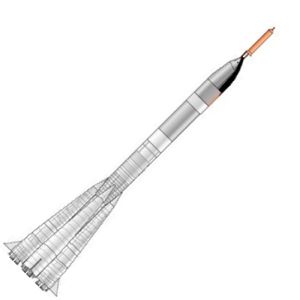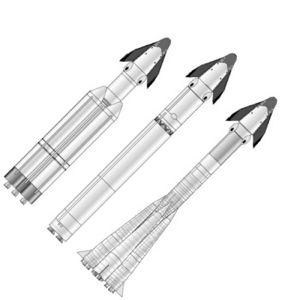
Home - Search - Browse - Alphabetic Index: 0- 1- 2- 3- 4- 5- 6- 7- 8- 9
A- B- C- D- E- F- G- H- I- J- K- L- M- N- O- P- Q- R- S- T- U- V- W- X- Y- Z
Onega
 Onega Conceptual drawing of Onega booster and Kliper recoverable lifting body design announced in 2004. Credit: © Mark Wade |
AKA: Soyuz-3. Status: Study 2004. Payload: 15,000 kg (33,000 lb). Apogee: 200 km (120 mi).
In order to achieve a payload double that of the current vehicle, it would seem a high-energy Lox/LH2 upper stage would be needed. Such an improvement was proposed as far back as July 1962 (the Molniya 8K78L) but never developed. An existing pad at Baikonur would be modified initially. A pad at Plesetsk, or the new Soyuz pad at Kourou could be modified eventually to accommodate the Onega.
LEO Payload: 15,000 kg (33,000 lb) to a 200 km orbit at 51.60 degrees.
Family: orbital launch vehicle. Country: Russia. Engines: RD-0126. Spacecraft: Kliper. Agency: Korolev bureau.
 | Kliper Prospective Kliper launch vehicles: from left: Angara 3A, Zenit-2SLB, Onega/Soyuz-3 Credit: © Mark Wade |
Back to top of page
Home - Search - Browse - Alphabetic Index: 0- 1- 2- 3- 4- 5- 6- 7- 8- 9
A- B- C- D- E- F- G- H- I- J- K- L- M- N- O- P- Q- R- S- T- U- V- W- X- Y- Z
© 1997-2019 Mark Wade - Contact
© / Conditions for Use